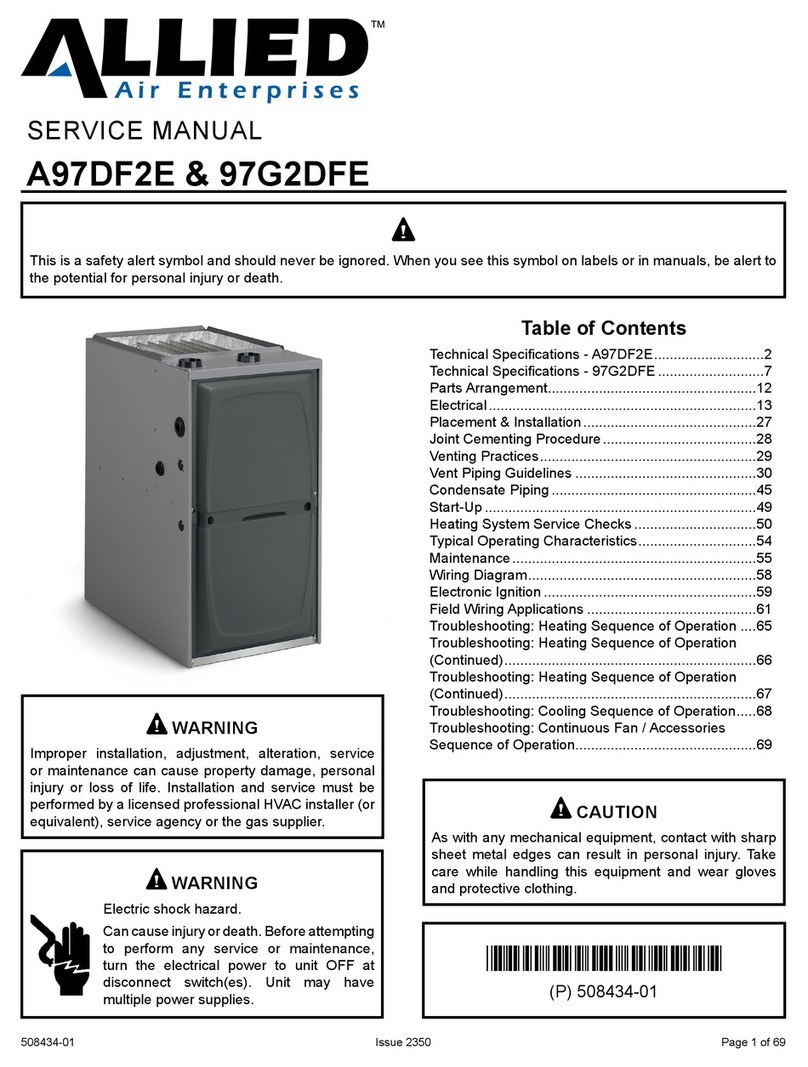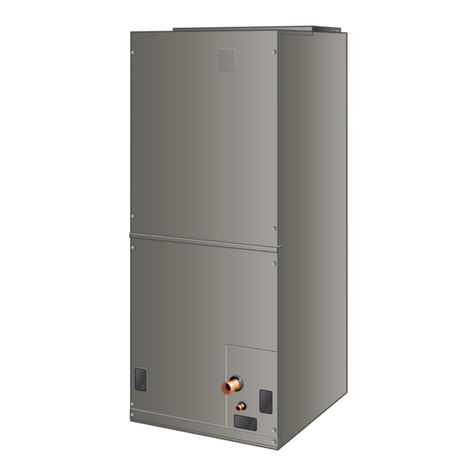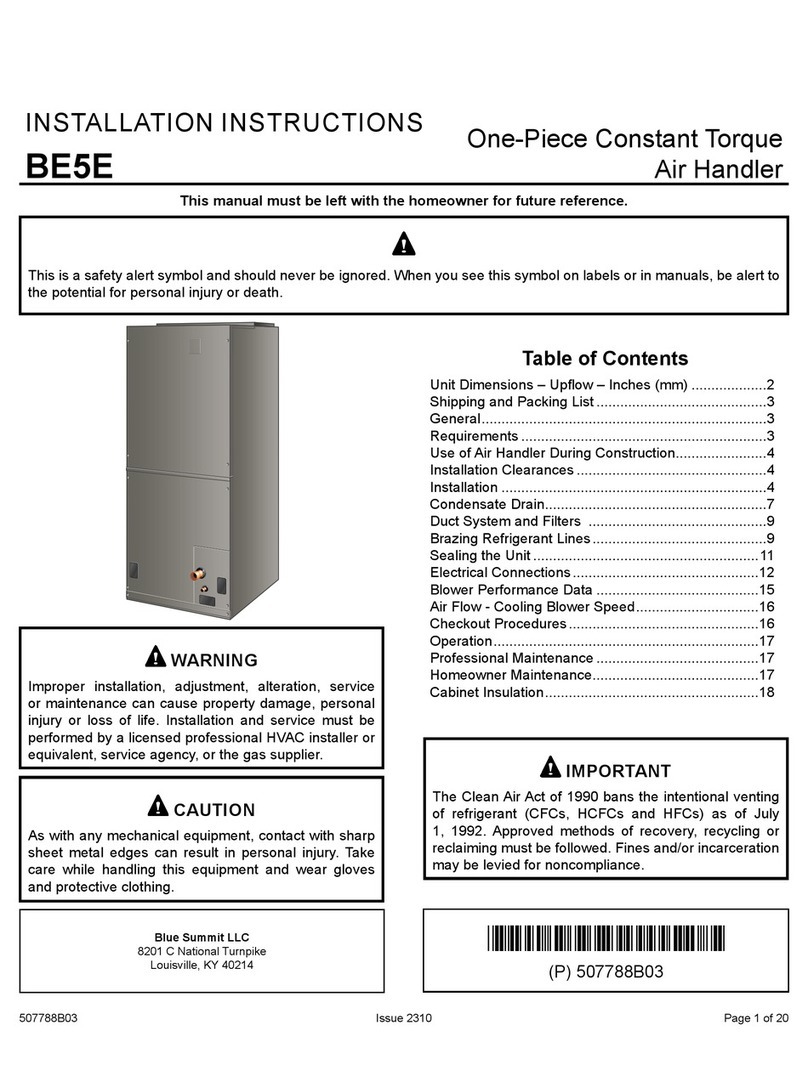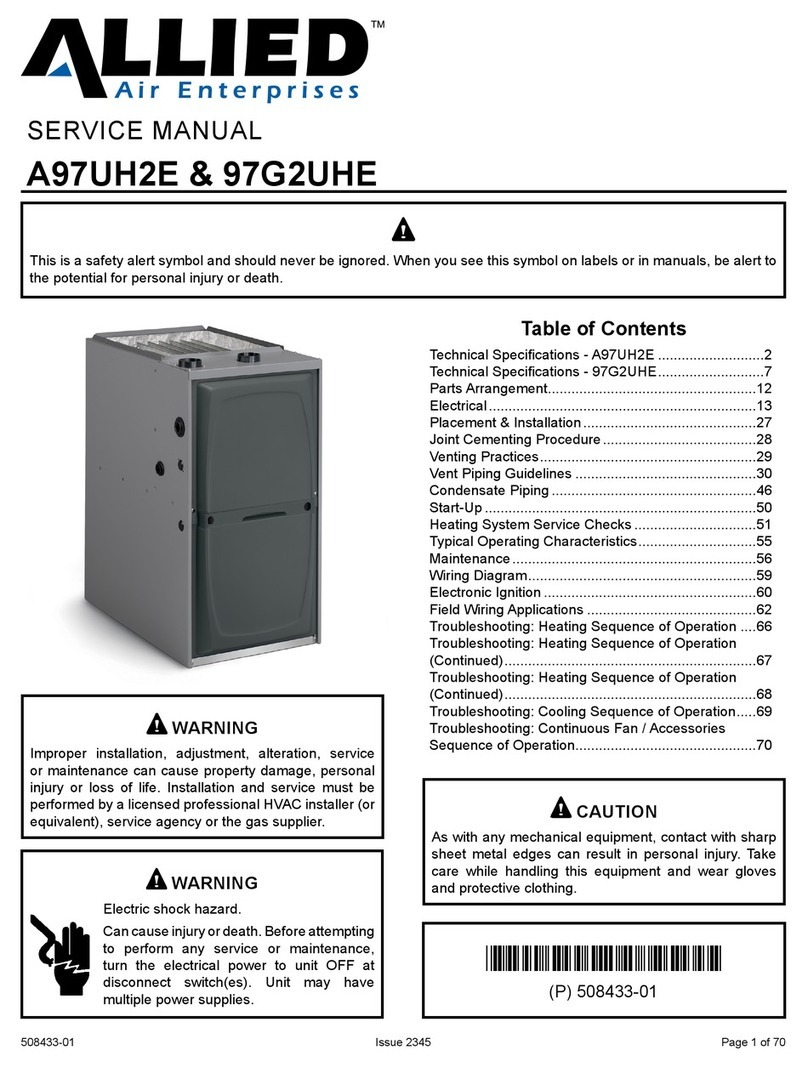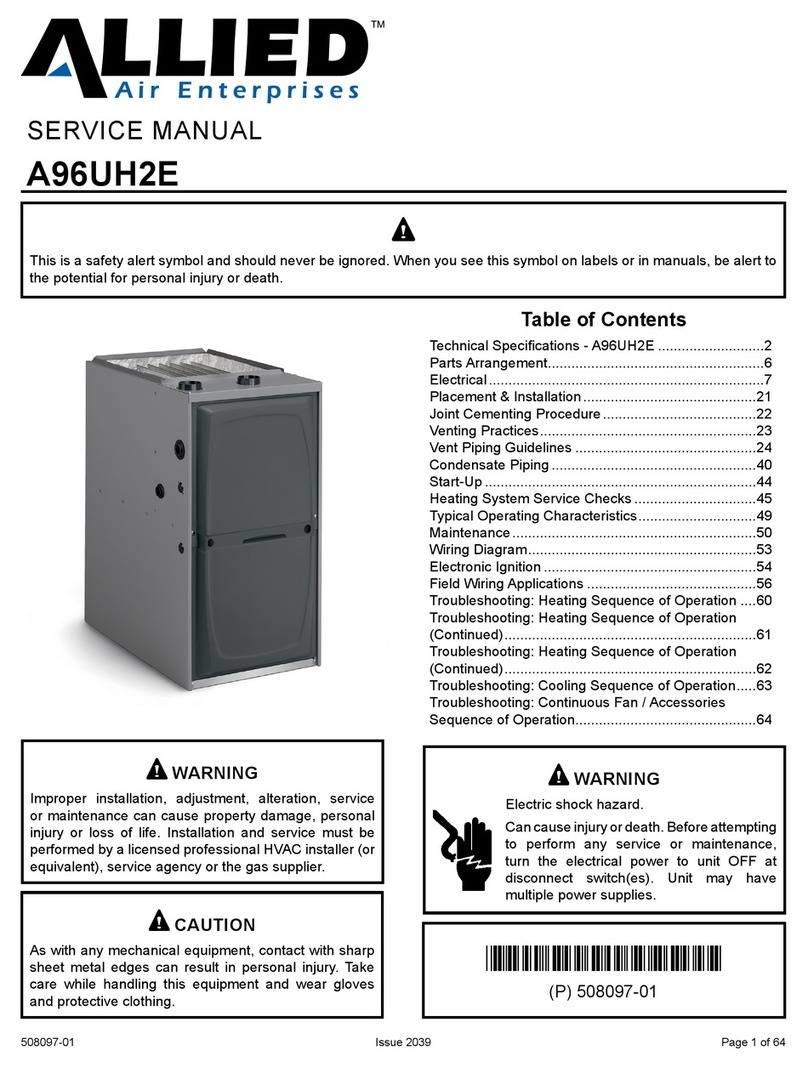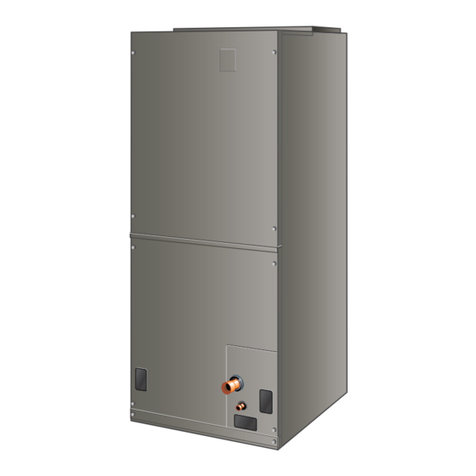
508380-01Issue 2309Page 8 of 96
As with any mechanical equipment, contact with sharp
sheet metal edges can result in personal injury. Take
care while handling this equipment and wear gloves
and protective clothing.
CAUTION
General Information
These instructions are intended as a general guide and do
not supersede national or local codes in any way. Consult
authorities having jurisdiction before installation.
The 4SCU23LX is a high-eciency split system air
conditioner with all-aluminum coil, designed for use with
HFC-410A refrigerant only.
The 4SCU23LX-24, -36 and -48 feature a variable capacity
rotary compressor. The 4SCU23LX-60 model features a
variable capacity scroll compressor.
This unit must be installed with an approved indoor air
handler or coil. For AHRI Certied system match-ups and
expanded ratings, visit www.AHRIdirectory.org. These
instructions are intended as a general guide and do not
supersede local codes in any way. Consult authorities
having jurisdiction before installation.
This outdoor unit is designed for use in systems that use a
Thermal expansion valve (TXV).
NOTE: Special procedures are required for cleaning the
all-aluminum coil in this unit.
Electric shock hazard.
Can cause injury or death. Before attempting
to perform any service or maintenance,
turn the electrical power to unit OFF at
disconnect switch(es). Unit may have
multiple power supplies.
WARNING
Operating Gauge Set and Service Valves
Torque Requirements
When servicing or repairing heating, ventilating, and
air conditioning components, ensure the fasteners are
appropriately tightened. Table 1 lists torque values for
fasteners.
Only use Allen wrenches of sucient hardness (50Rc
- Rockwell Harness Scale minimum). Fully insert the
wrench into the valve stem recess.
Service valve stems are factory-torqued (from 9 ft-lbs
for small valves, to 25 ft-lbs for large valves) to prevent
refrigerant loss during shipping and handling. Using an
Allen wrench rated at less than 50Rc risks rounding
or breaking o the wrench, or stripping the valve stem
recess.
IMPORTANT
To prevent stripping of the various caps used, the
appropriately sized wrench should be used and tted
snugly over the cap before tightening.
IMPORTANT
Parts Recommended Torque
Service valve cap 8 ft.-lb. 11 NM
Sheet metal screws 16 in.-lb. 2 NM
Machine screws #10 28 in.-lb. 3 NM
Compressor bolts 90 in.-lb. 10 NM
Gauge port seal cap 8 ft.-lb. 11 NM
Table 1. Torque Requirements
Using Manifold Gauge Set
When checking the system charge, only use a manifold
gauge set that features low loss anti-blow back ttings.
Manifold gauge set used with HFC-410A refrigerant
systems must be capable of handling the higher system
operating pressures. The gauges should be rated for use
with pressures of 0 - 800 psig on the high side and a low
side of 30” vacuum to 250 psig with dampened speed to
500 psi. Gauge hoses must be rated for use at up to 800
psig of pressure with a 4000 psig burst rating.
Operating Service Valves
The liquid and vapor line service valves are used for
removing refrigerant, ushing, leak testing, evacuating,
checking charge and charging. Each valve is equipped
with a service port which has a factory-installed valve stem.
Figure 4 through Figure 6 provide information on access
and operation of both angle and ball service valves.



















